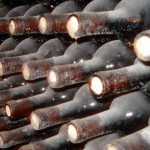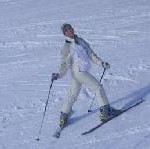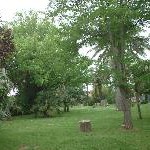State improves fishing opportunities in Black Hills cities and towns
Spearfish, South Dakota – Although trout fishing is often associated with backcountry creeks and streams, a lot of Black Hills anglers are catching trout in downtown Rapid City – in part because the South Dakota Department of Game, Fish & Parks has worked in recent years to create better urban fishing opportunities in the Black Hills.
„When gas was hitting $4 a gallon, it made sense to let guys avoid driving 75 miles to catch a trout,“ said Keith Wintersteen, assistant manager of the McNenny Fish Hatchery near Spearfish. „It’s nice to be able to send kids on a bike, or to ride your own bike, and drop a line in and fish.“
Rapid Creek, which runs through the center of Rapid City, has some of the best fishing in the Black Hills. Waterways near Custer, Deadwood, HillCity and other towns in the Black Hills of South Dakota are also prime trout streams.
In addition to stocking trout in these waterways, the state has worked with federal agencies on streambed projects to create prime habitat for naturally reproducing trout. Rapid City is one of the few metropolitan areas in the in the United States that hosts a population of wild brown trout.
The Black Hills, on the western edge of South Dakota, boast some 400 miles of alpine streams and 14 lakes and reservoirs. The region’s combination of geology and hydrology offer stunning year-around streams that are home to brook trout, brown trout and rainbow trout. Many of the streams throughout the Black Hills support naturally reproducing fish populations.
Each year the state of South Dakota stocks some 450,000 trout in South Dakota waters. Locations range from the rugged and isolated French Creek in CusterState Park – crews had to pack the fish in aboard special backpacks – to popular reservoirs such as HorsethiefLake, SheridanLake and Deerfield Reservoir.
The heavy Black Hills snowpack during the winter of 2008-09 will improve fishing this summer and beyond, according to Jerry Wilhite, coldwater biologist for the Department of Game, Fish & Parks. The moisture – more than 20 feet of snow fell on Lead, S.D., this winter – has filled reservoirs, recharged the water tables and turned dry creek beds into flowing streams.
Wilhite said the moisture helps the trout population in a number of ways. Fast-flowing water carves new places were trout can take cover. It also washes nutrients into the water, and scrubs silt from the creek beds.
„Trout need clean gravel,“ he said. „During drought periods, silt builds up. That hinders spawning and the production of aquatic insects.“
In addition, high water allows trout to move upstream, dispersing into new ponds and pools. That’s something the fish can’t do in the dry years when stream flows are reduced to a trickle.
Some of the best Black Hills trout fishing can be found in the lakes near Custer. Stockade Lake, 3 miles east of Custer, has trout, bass, crappie, and northern pike. Some of the more productive streams in the area include French Creek, Spring Creek, Castle Creek, Rapid Creek, Whitewater Creek and Spearfish Creek.
For nonresidents age 16 or older, a one-day fishing license is $14. Nonresidents younger than 16 can fish without a license in South Dakota. „If you’re looking for a family activity at a reasonable price, there’s nothing better than fishing,“ Wintersteen said.






